We are therefore faced with an apparent paradox.
Without doubt, similar studies are historically born upon reflections on the themes introduced by Kahn; yet, for Italians in particular, each study of linguistic tools loses the mystic aura and simple faith in the charismatic power of institutions.

It is possible here to find a warning: once the "form is made free;" the geometric universe becomes an uncontrollable "adventure."
However, within its search for the pure and intrinsic qualities of form, it possesses qualities at once self-critical and self-ironic, which are revealed as a disenchanted pop image (and wherein the exasperated geometric play of the Esso station is resolved).
Compared to the purism of Rossi, the architecture of De Feo, or for that matter of Georgio Ciucci and Mario Manieri-Elia, appears more empirical and casual.
Here, De Feo treats geometry as a primary element, to be juxtaposed with the chosen functional order.
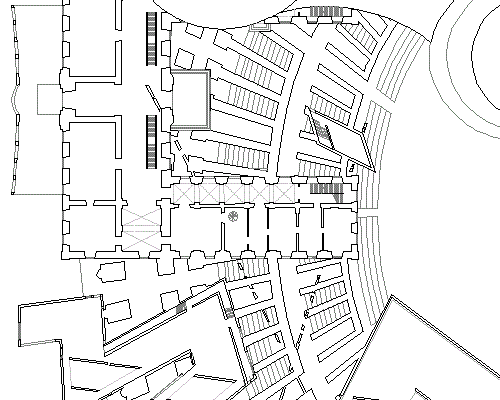
The experimentation with the deformation of geometric elements is predominant, as seen in the project for the new House of Representatives in Rome, planned with the Stass group (1967); the Technical school at Terni (1968-74); and the competition for an Esso service station (1971).
And in fact, the works of De Feo--among the most remarkable of recent Italian work--oscillate between the creation of entirely virtual spaces and typological research at the level of the organism.
| |
In writing about De Feo, Francesco Dal Co speaks of a "suspended architecture."
The examples of Stirling and Rossi have proven useful precisely because in their presence the very function of criticism is called into question and because, in part, we are dealing with those extreme situations which are important to the current debate on the architectural language, as seen in the work of Louis Kahn, Denys Lasdun, the "Five," and the Italian experimentalists, such as Vittorio De Feo, the Stass group or Vittorio Gregotti.
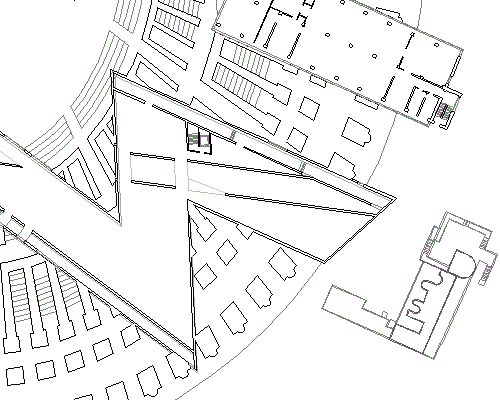
Throughout this discussion, we have deliberately established the analysis of a specific phenomenon with reference to a correct use of criticism.
The complexity of Aymonino and the silence of Rossi: two ways to declaim the guttural sounds of the yellow giants-we recall here the expressionist drama Der gelbe Klaug in which Wassily Kandinsky had personified the "new angels" of mass society.
But this time, in an unusual way: as a colloquy, that is, between two languages which approach the same result.
Architecture, once again, has made a discourse on itself.
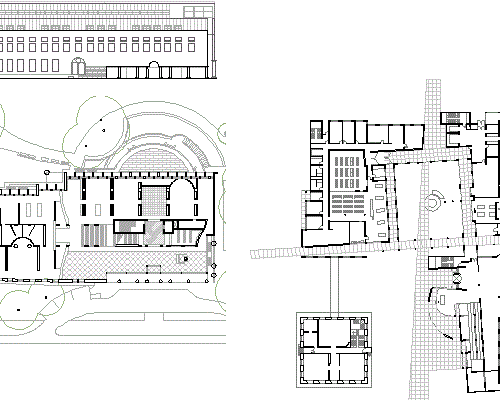
Because facts have words, form may be silent. The simultaneous presence of objects constructivistically aggregated, obstinately forced to communicate messages or modes of behavior, and a mute object closed in its equally obstinate timidity, "narrate" in an exemplary fashion the drama of modern architecture.
The position taken by Kraus and Loos is not negated; it is, however, made more ambiguous.
| |
And it is here that we find, facing the aggregation of Aymonino's signs, the absolute sign of Rossi.
Yet, and quite significantly, Aymonino, by assigning to Rossi the design for one of the blocks within this neighborhood, must have felt the need to confront himself with a proposal radically opposed to his own.
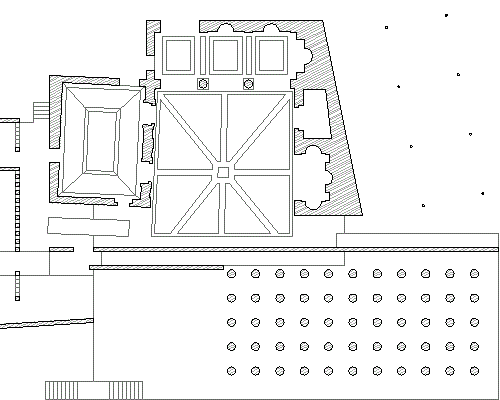
Aymonino apparently wants to speak the language of superimposition and complexity, within which single objects violently sprung together insist upon displaying their individual role within the entire "machine."
The comples and designed by Aymonino wishes to underscore every resolution, every joint, every formal artifice.
In the Gallaretese neighborhood in Milan, to the moderated expressionism of Carlo Aymonino, who articulates his residential blocks as they converge into the fulcrum of the open-air theater in a complex play of artificial streets and nodes, Rossi creates an opposition in the sacred precision of his geometric block which is held above ideology and above all utopian proposals for a "new lifestyle."
The aforementioned statement by Simmel is thus now inverted and thereby confirmed: the space of life excludes that of form, or at least keeps it constantly in check.
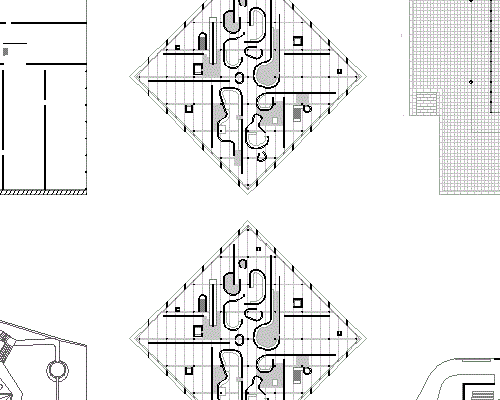
Only in the service of illusory functions, virtual ones, that is, is it now possible to build virtual spaces.
Yet to refuse to spaek with architecture we may miss only that which evades life: the monument--that is, the artificial creation of a collective memory, true "parallel action" of "man without quality,"--and the tomb--the illusion af a universe beyond death.
|





